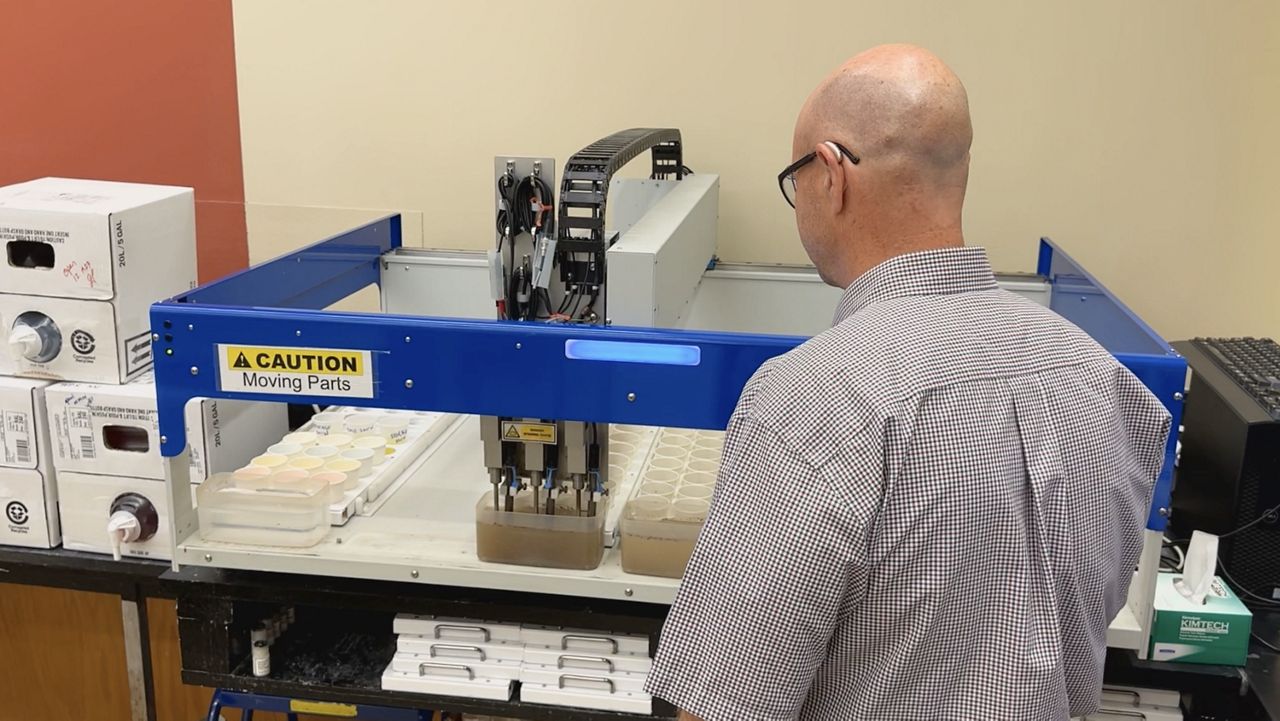RALEIGH, N.C. — Homeowners can send in their soil to be tested for free to help them have the best lawn on the block.
What You Need To Know
- Soil sample testings are free from April to November
- The testing helps evaluate the fertility of the soil
- Samples go through a multi-day journey in the lab for testing
- Reports of overall soil, lime and fertilization will be sent via email
David Hardy, is the chief of soil testing and assistant director of the Agronomic Division of the N.C. Department of Agriculture and Consumer Services.
He has been working with soil for over 30 years and is helping farmers and homeowners test the fertility of their soil.
“They can drop it off at our dock. Some county extension offices take samples from homeowners … if they ship them. We advise to use a sturdy cardboard shipping box. Do not use a small box as a shipping box. Do not put the soil box and the submission sheet in the flat mailer because those boxes get crushed. So they wind up with two boxes. Samples are contaminated. It's a no-go,” Hardy said.

Homeowners who wish to test the fertility of their soil, need to gather a 4-inch deep slice from areas they wish to test, transfer into a clean container, break up the soil and place it in the assigned box. After the soil is sent to the lab with the correct forms, it begins its multi-day journey, being dried, ground, sorted and extensively tested.
“Most gardeners and homeowners are trying to maybe limit some fertilization. They're trying to have an aesthetic or a productive garden,” Hardy said.
Hardy said the majority of the soil samples they test for fertility are from farmers, especially during peak season, which runs from December through March.
“We'll probably have 100,000 samples in here waiting to be analyzed in the lab,” said Hardy, in reference to peak season.
As part of the journey, the samples are separated into classes as organic, mineral organic and mineral.
“Most of the samples that a homeowner sent in will be a mineral. And the target will depend upon what they're growing,” Hardy said.
Depending on what crop, shrub, grass, tree or flower you are growing, the soil may need a different pH level.
Different kinds of azaleas also can grow in various colors based on the pH of the soil.
The soils go through various tests over numerous days, giving a deeper dive into the soil that would not be able to be evaluated at home.
“The general homeowner or general public can purchase a pH probe you stick in the ground. They're not generally that accurate, and it takes another type of measurement of acidity that we make in the lab to actually give an accurate recommendation,” Hardy said.
After the soil completes its final tests for multiple nutrients, Hardy is given a final report and recommendation for the lawn.
“With the report, they see the soil test results that we give for everything that's done in the lab. Plus, they have a recommendation for lime and fertilizer,” Hardy said.
Homeowners will get their report via email.

“We do not test for pesticides, pollutants, contaminants, other chemicals people may be concerned with,” Hardy said.
Hardy said that other concerns of a yard or garden might be directed to other outlets such as the Plant Disease and Insect Clinic, a private clinic or master gardener.
“People always think of soil fertility. It may be a disease. It may be an insect. It may be something below ground that's causing that grass or crop not to grow well. So just just think about other aspects of growing plants rather than fertility. Fertility is very important, but the excessive fertilizing may not make things really better. How would they find it is like a bug or something else,” Hardy said.
For more information and instructions on how to submit and collect a soil sample, visit the North Carolina Department of Agriculture and Consumer Services website along with your local extension office.
Soil samples sent during non-peak season, April through November, are free, while peak season between December and March requires a $4 per sample fee.









